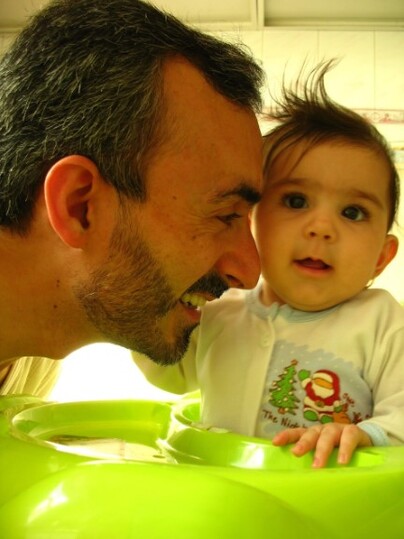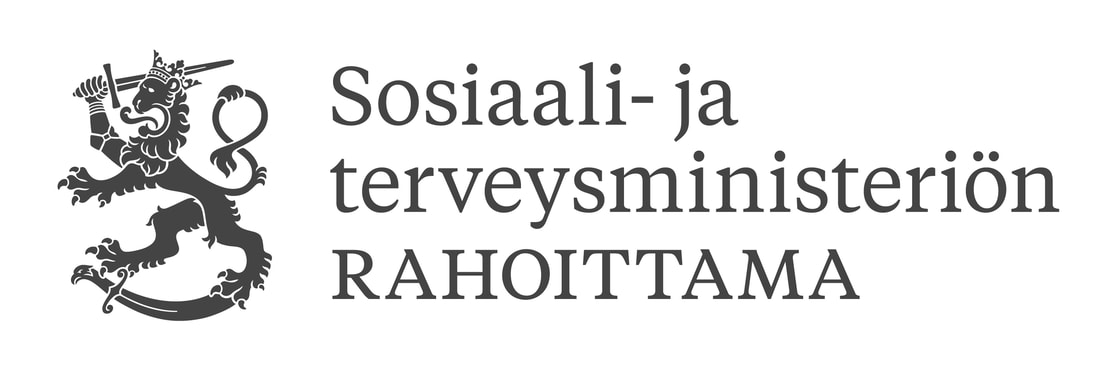|
How to improve and protect against a decline in relationship satisfaction So to increase relationship satisfaction in couples and to help reduce relationship break down we need to foster skills such as (3);
So how can you practically try to improve your multicultural relationship skills? Well here are a few ideas to start with; Emotional regulation skills Self-regulation is like a muscle and it needs to be exercised if you want to improve it. Meditation is a great way to do this and can increase your self-regulatory strength and has many other benefit. Below are a few links to free meditation websites with guides.
Conflict communication skills Sometimes one of the biggest problems to communication is when you have an elevated emotional response. As soon as one person in the discussion has raised their voice, it is likely that false judgements and assumptions have been made. When you next feel misunderstood in an argument, or if you are discussing a subject that you know you both argue about, try the following and hopefully it will improve your listening and empathising skills within your relationship.
This process quickly dissipates any emotional arousal and creates improved communication, greater acceptance and less defensiveness and helps empathetic understanding of each other (8). Relationship Maintenance skills Relationships can take an incredible amount of work to maintain, and that work is heavily dependant on communication. Research has identified 5 positive behaviours, that are associated with an increase in relationship satisfaction, and 6 negative behaviours that you should try to reduce, that are related to a reduction in relationship satisfaction (9) Positive Skills
Negative skills
Tips Learn each other’s languages, this can create a greater understanding, empathy and improve deeper communication between you both by discovering hidden meanings of words in the others language. This leads to a deeper understanding of your partner. As a by-product this can also help you to understand your partner’s culture and help with the integration process if you have move to your partner’s country.  Tips for native partner If your partner has moved to your native country try to remember to be understanding and supportive, as discussed above there are a lot of extra stresses that you may or may not be aware of in moving to a new country. These extra stresses added to normal life stresses can elevate the risks of mental health problems with the non-native partner. Your partner could need your support in almost all parts of their lives at the beginning due to the complications of language and culture. Even in simple areas such as buying food or arranging a dentist appointment, this can be very debilitating for your partner to have to wholly rely on you. Being open and asking questions, asking questions builds an awareness and an acceptance of the differences and similarities that that you face as a partnership and as a family. For example you will need to build a third culture together by finding out what things are important to your partner from their culture that you could both incorporate into your creation of your third culture. The value of this is to respect what is important to them and yourself to create understanding and acceptance of one another’s culture. If supporting your partner feels like it might become too much, before it does seek further support. There are peer support groups available at Familia for both native and foreign partners that provide additional support or if you prefer you can contact a therapist or couples therapist to help further. There many ways to improve relationships and you need to find one that works for you as individuals and as a family. Relationships and families can be hard work sometimes, and I think there is a need to recognise this and take a moment to think about it. Without work relationships might dwindle and fracture, but if you’re willing to create a cherished relationship they can be the most rewarding aspect of life. The loving relationship that surround you will reward you with happiness and life longevity.
(Timothy Hudd BA) The author is a BACP registered Counsellor and psychotherapist in the UK, living and practicing in Helsinki, and married to a Finn himself. References
Millaista on olla kahden kulttuurin perheessä kasvanut nuori? Mitä hyvää ja huonoa voi kahden kulttuurin parissa kasvaminen tuoda elämään? Onko kahden kulttuurin nuorten yhteiselle toiminnalle tarvetta? Muun muassa näihin kysymyksiin etsimme vastauksia kahden kulttuurin nuorille suunnatulla kyselyllä. Kahden kulttuurin nuorten kyselyn vastauksia Familian marraskuussa 2017 julkaistu kysely oli osoitettu 15-26-vuotiaille nuorille ja nuorille aikuisille, joiden vanhemmat ovat syntyneet eri maissa. Halusimme kuulla nuorten omia ajatuksia ja kokemuksia kaksikulttuurisuudesta, ja samalla kysyä suoraan, onko Familia ry:n kahden kulttuurin nuorille suunnittelemalla toiminnalla tarvetta. Vastausten määrä yllätti meidät, ja haluamme kertoa myös muille, millaista on kyselyyn vastaajien mielestä olla kahden kulttuurin nuori. Elämää kulttuurien keskellä ja välissä Kaksikulttuurisuus on Familia ry:lle vakiintunut termi kuvata perheitä, joiden puolisot ovat syntyneet eri maissa. Termillä kuvataan myös näissä perheissä kasvavia lapsia ja nuoria. Kyselyssä kahden kulttuurin nuorille kysyimme suoraan, kokeeko nuori olevansa kaksikulttuurinen. Reilu puolet vastanneista nuorista kokee termin kuvaavan heitä ja heidän elämäänsä kulttuurien keskellä. Osa nuorista kertoo olevansa asiasta hieman epävarmoja, tai kokevansa esimerkiksi termin ”monikulttuurinen” kuvaavan heitä paremmin. Osa nuorista taas kertoo elävänsä kahden kulttuurin välissä, sillä ei koe kuuluvansa kumpaankaan kulttuuriin täydellisesti tai kokee alituisesti olevansa ulkopuolinen. Toisaalta vastaajista löytyy myös nuoria, jotka eivät koe itseään kaksikulttuurisiksi lainkaan – he mieltävät itsensä esimerkiksi 100% suomalaisiksi. Perheen kaksi kulttuuria näkyy kyselymme perusteella nuorten elämässä monin tavoin. Monen nuoren perheessä puhutaan vähintään kahta kieltä tai vietetään juhlia molemman vanhemman kulttuuriperinteiden mukaan. Kulttuurit näkyvät niin ikään uskonnossa, huumorissa, ruoassa, musiikissa ja vaatetuksessa, mutta myös arvoissa. Vanhempien kulttuurien arvot vaikuttavat sekä perheen tapoihin että nuoren omiin valintoihin erimerkiksi uraa tai kumppania valitessa. Kuten elämään aina, myös kahdessa kulttuurissa elämiseen liittyy niin positiivisia kuin negatiivisia puolia. Monet asiat voivat myös olla näitä molempia samaan aikaan. Kyselyyn vastanneet nuoret pitävät kahden kulttuurin taustansa myönteisimpänä asiana sitä, kuinka kaksikulttuurisessa perheessä kasvaminen on tehnyt heidän maailmankatsomuksestaan avaran ja monipuolisen. Nuoret näkevät kaksikulttuurisessa perheessä kasvamisen opettaneen paljon erilaisista kulttuureista ja auttaneen olemaan ymmärtäväisempiä ja joustavampia erilaisuutta kohtaan. Kaksikulttuurisuus antaa nuorelle mahdollisuuden olla osa kahta kulttuuria ja nähdä näiden erilaisuuksia lähietäisyydeltä. Hyvänä puolena moni nuoret näkivät myös laajemman kielitaidon. Kahden äidinkielen puhuminen voi olla hyödyllistä monessa asiassa; työssä, kaveripiirissä, asioiden ymmärtämisessä sekä uusien kielten opettelussa. Positiivisena pidetään myös sitä, että sukulaisia asuu vähintään kahdessa eri maassa ja heidän luonaan on mahdollista vierailla. Kaksikulttuurisella nuorella voi olla myös kaksi kotimaata sekä kaksoiskansalaisuus, joka antaa syitä matkustaa, tehden siitä samalla myös helpompaa. Lähestulkoon kaikki myönteisenä kaksikulttuurisuudessa pidetyt asiat voivat näkyä nuoren elämässä myös jollain lailla negatiivisina. Vaikka kuulumista kahteen kulttuuriin ja sen tuomaa elämänkatsomusta pidetään hyvänä asiana, asettaa se selvästi myös nuorille haasteita ja tarpeen pohtia omaa identiteettiään. Yli kolmasosa kyselyyn vastanneista nuorista mainitsi tuntevansa kuulumattomuuden tai toiseuden tunnetta. Nuoret tuntevat olevansa ulkopuolisia, olivat he kummassa kotimaassaan vain. Moni myös kertoi, ettei koe olevansa tarpeeksi osallinen kummassakin kulttuurissa. Toisen vanhemman suku voi myös asua kaukana eikä heitä tämän vuoksi ole mahdollista tavata usein. Myös hyvin myönteisenä pidetty monikielisyys esiintyy nuorten vastauksissa huonona piirteenä kaksikulttuurisuudessa. Kielitaidon puute voi aiheuttaa vaikeuksia elämässä varsinkin silloin, kun perheessä ei ole vahvaa yhteistä kieltä. Negatiivisena elämässä kahden kulttuurin perheessä voi näkyä myös uskontojen sekä arvojen ja tapojen erilaisuudet perheen sisällä. Nämä aiheuttavat nuorten mielestä ristiriitoja silloin, kun perheen jäsenten erilaisuutta ei osata arvostaa tarpeeksi. Kaksikulttuurisena yksikulttuurisuuden keskellä Kaksikulttuurisessa perheessä kasvaminen heijastuu myös perheen ulkopuoliseen elämään. Monet kyselyymme vastanneista nuorista kokee kahden kulttuuriin taustan vaikuttaneen oman kaveripiirin muodostumiseen. Se, miten asian koetaan vaikuttaneen, kuitenkin vaihtelee. Osa nuorista kokee kaksikulttuurisuuden laajentaneen kaveripiiriä tai tehneen siitä monikulttuurisemman. Nuoren ystävät saattavat olla myös avarakatseisempia. Jotkut kertovat itse hakeutuvansa tarkoituksella monikulttuuristen tai kaksikulttuuristen nuorten seuraan, sillä heidän kanssaan on enemmän yhteistä. Kavereita saattaa olla myös enemmän, jos heitä löytyy molempien vanhempien kotimaissa. Osa nuorista taas kokee kaksikulttuurisuuden vaikuttaneen omaan kaveripiiriinsä, mutta ei niinkään omasta tahdostaan tai kovin positiivisella tavalla. Kaveripiiri on esimerkiksi saattanut muodostua niistä, jotka ovat kokeneet samanlaista syrjintää taustansa vuoksi tai niistä, jotka eivät ole kiusanneet. Aina nuorella ei siis ole mahdollisuutta vaikuttaa omaan kaveripiirinsä, vaikka niin toivoisikin. Joillain nuorilla kaksikulttuurisuuden vaikutus kaveripiiriin on kuitenkin jäänyt vähäiseksi tai sen ei koeta vaikuttaneen lainkaan. Osalla kaveripiiri muodostuu täysin kantasuomalaisista henkilöistä, toisilla kavereita on myös toisesta maasta tai kulttuurista. Tämän ei kuitenkaan nähdä niinkään johtuvan kaksikulttuurisesta taustasta. Suurin osa kyselyyn vastanneista nuorista on kokenut kokevansa syrjintää ja/tai ennakkoluuloja joissain vaiheessa elämäänsä. Toisilla vastaajista kokemuksia on ollut enemmän ja ne ovat olleet vaikeampia kuin toisilla. Ennakkoluuloja nuoret ovat kokeneet esimerkiksi nimeensä, ulkonäköönsä sekä vanhempiensa kotimaihin liittyen. Ulkomaalaiseksi luuleminen ja vieraiden ihmisten kyselyihin omasta taustastaan vastaaminen on monelle kahden kulttuurin nuorelle arkipäivää. Valtavirrasta poikkeavan ulkonäkönsä vuoksi moni nuori kokee toiseuden tunnetta. Monen kyselyyn vastanneen nuoren mielestä heidän kokemansa syrjintä tai ennakkoluulot liittyvätkin enemmän ulkonäköön, kuin heidän edustamiinsa kulttuureihin. Vaikka moni kahden kulttuurin nuori kokee ennakkoluuloja ja epäilyä suomalaisuuttaan kohtaan voi tilanne olla myös toisin päin. Osa kyselyyn vastanneista nuorista kokee, että monen ihmisen on vaikea ymmärtää heidän olevan sekä suomalaisia että osaksi jotain muuta kulttuuria. Tämä näkyy toiseuttamisen kautta, eli nuoria ei niinkään pidetä suomalaisina vaan ennemmin ulkomaalaisina, mutta myös siten, ettei nuoren toista, ei-suomalaista puolta huomioida laisinkaan. Moni nuori kertoo kohdanneensa elämänsä aikana taustansa vuoksi ennakkoluuloja ja syrjintää, mutta on myös kahden kulttuurin nuoria, jotka eivät näitä haasteita ole elämässään kohdanneet. Nuorten mielestä se voi johtua esimerkiksi vanhempien eurooppalaisesta taustasta. Tarve kahden kulttuurin nuorten toiminnalle Osalle nuorista omasta kaksikulttuurisuudesta ja taustan merkityksestä puhuminen muiden kaksikulttuuristen nuorten kanssa on mahdollista perheen ja ystävien vuoksi. Muiden kanssa puhumista kuvataan vertaistueksi ja mahdollisuudeksi jakaa samankaltaisia kokemuksia. Jos nuoren lähipiiristä ei kuitenkaan löydy muita kaksikulttuurisia henkilöitä, ei vertaistuen saaminen ole helppoa. Kysely antaa selvää näyttöä siitä, että tarvetta ja kiinnostusta kahden kulttuurin nuorten yhteiselle toiminnalle on. Selvä enemmistö, yli kaksi kolmasosaa kyselyyn vastanneista, pitää kaksikulttuurisille nuorille järjestettävää toimintaa tärkeänä. Vastaajista löytyy myös nuoria, jotka eivät koe kaksikulttuurisuuden määrittelevän heitä niin, että yhteinen toiminta näiden nuorten kanssa kiinnostaisi. Monen nuoren mielestä yhteinen toiminta kuitenkin lisäisi kaksikulttuuristen nuorten yhteenkuuluvuuden tunnetta ja vähentäisi yksinäisyyttä. Se voisi myös auttaa omien juurien hyväksymisessä sekä lisätä ylpeyden tunnetta omista taustoistaan. Nuoret pitävät erittäin tärkeänä mahdollisuutta saada vertaistukea, jakaa kokemuksia sekä keskustella itseään koskettavista asioista muiden kanssa. (Milka Autio, järjestökoordinaattori, Familia ry)
 Having a baby for many couples brings about joyous nourishment for all involved and is said to be more work and more rewarding than you can ever imagine. This new change can also create a significant decrease in satisfaction within the relationship. This article series is based on the relationship changes during this life transition, the effects on the communication within the relationship and the possible ways to improve these skills for the betterment of the relationship and the baby’s psychological and emotional development. During this transition from partnership to parenthood, the focus of the relationship is switched from the self and partner to the new born baby. Half of all new parents report a decrease in their relationship satisfaction. This disconnect has been historically explained through the ‘rose tinted’ view of child bearing perpetuated by society and the actual reality of work load associated with parenthood. This transition creates a dramatic reorganisation of the relationship dynamics and the needs within them (1). After the child is born the new parents patterns of intimacy and communication change, sexual satisfaction tends to decline, and new parents report an increase in conflict and disagreement. This might lead to a reliable decrease in relationship satisfaction and seems consistent across western cultures and is therefore likely to affect intercultural couples in Finland. The importance and impact of this decrease in relationship satisfaction upon the baby’s development can be seen in the link to depression, attentional and emotional related problems, withdrawal, poor social competence, low self-esteem and conduct related disorders later in life. The environment that is provided by the parents is shaping the way in which the baby’s brain is developing and can inhibit the emotional and intellectual development of the baby. If the parents are experiencing a reduction in their relationship satisfaction then they are likely unable to provide a healthy emotional environment for the baby’s development (1,2). Furthermore, women in the partnership tend to experience a larger change in their relationship satisfaction than men. This can be partially explained by the stereotypes of labour distribution for gender roles within the home, as the mothers are more likely to have disproportional demands on their time over the fathers (1). This major life change of parenthood, forces the re-examination of the prior arrangements within the relationship and changes the perceptions of imbalances and injustices. The problems that existed in the relationship before parenthood become exacerbated with the additional dynamic of a baby. This new dynamic creates issues common to both mono and intercultural couples alike for example;
Intercultural couples additionally suffer from stresses related to their change of circumstances, for example;
These additional stresses, and many more within intercultural relationships are clearly reflected within the per year divorce rates in Finland, being three times higher for intercultural couples than mono-cultural couples (6). Keys to success As we now know this worrying statistic, it is important to keep in mind what factors create success in relationships. The key differences that predict a stable or an improvement in relationship satisfaction are for example (Romano, 2008);
During the transition to parenthood any relational problems that are present in the relationship or individual psychologies before the birth of the child can grow to become more of a problem. This can be explained by the couple’s self-regulatory strength depletion. Self-regulatory strength can be understood as the ability for a person to repress, change or regulate their own behaviour. Self-regulatory strength can be temporally weakened by recent exertion and stresses common to new parents such as time pressure, noise, fatigue etc. This can lead to the decline in the relationship satisfaction as the depletion can affect the parents emotional regulation, choice-making, physical persistence, impulse inhibition, and high-level cognitive performance (7). The couple’s individual psychologies interact with the transitional issues, who we are, the circumstances we encounter, and create the way that we respond. This will define whether there will be a decline in the relationship satisfaction or not (1). The negative transitional issues that are associated with a decline in relationship satisfaction are;
In part 2 we will read more about how to improve and protect against a decline in relationship satisfaction. (Timothy Hudd BA) The author is a BACP registered Counsellor and psychotherapist in the UK, living and practicing in Helsinki, and married to a Finn himself. References
|
kirjastoKirjasto-sivuilta löydät artikkeleita, juttuja, vinkkejä ja oppaita sekä tutkimustietoa kahden kulttuurin perheitä lähellä olevista aiheista
kategoriat
All
|
|
|
© Familia 2024










 RSS Feed
RSS Feed

